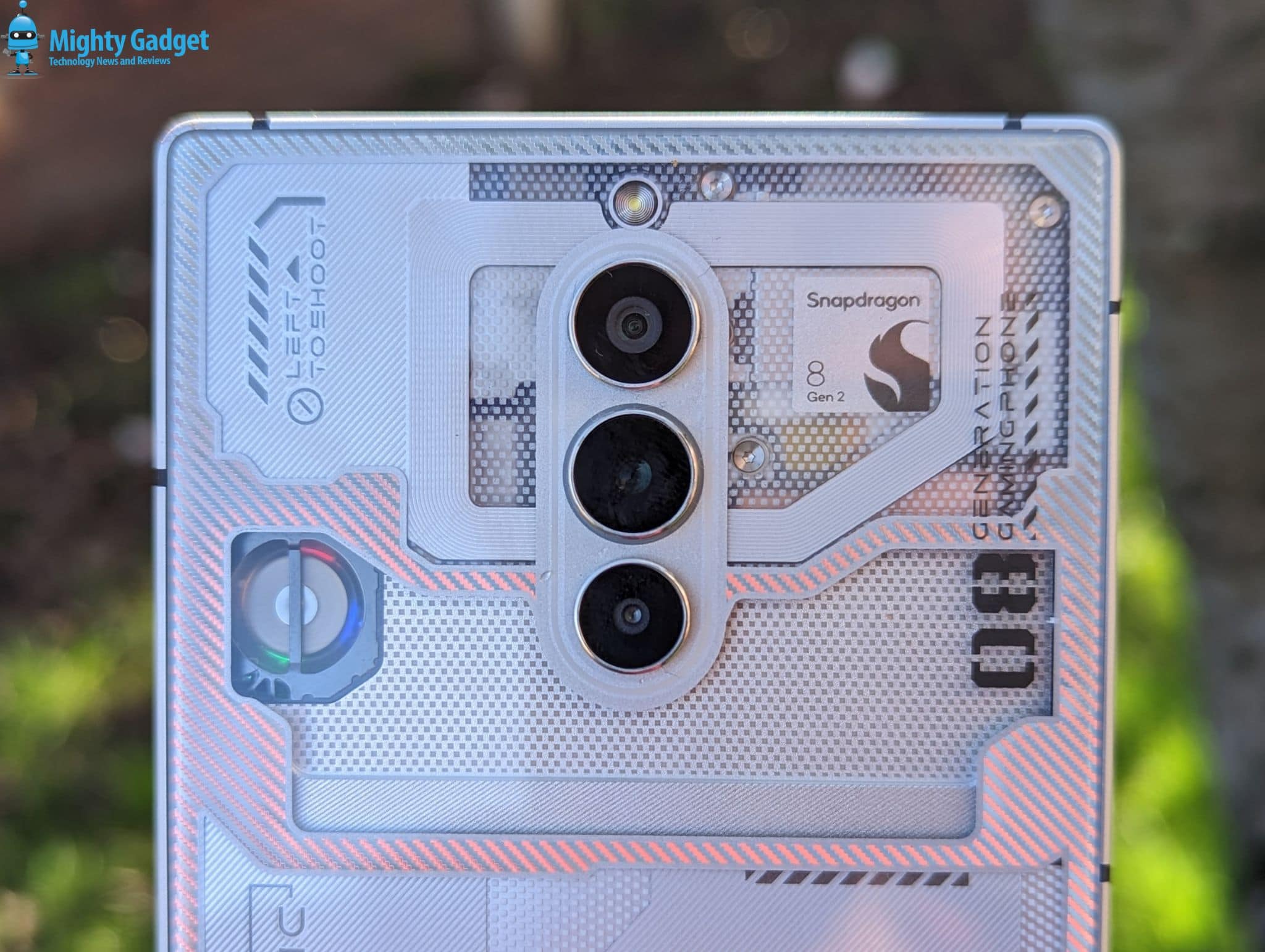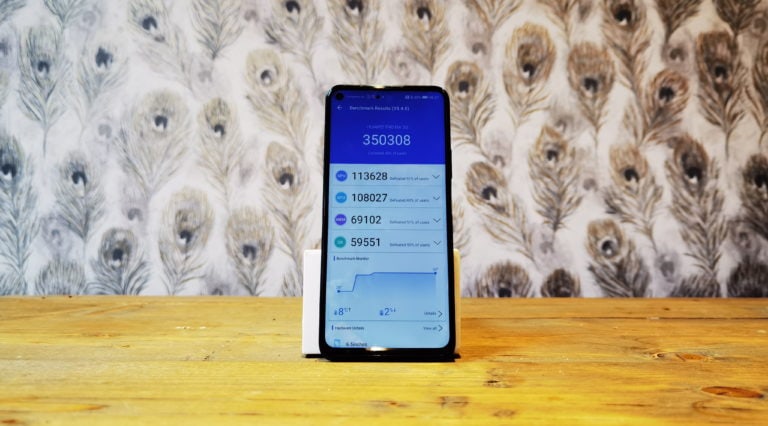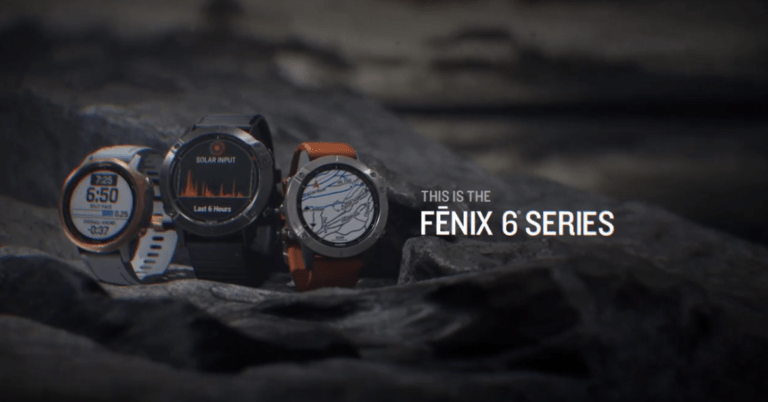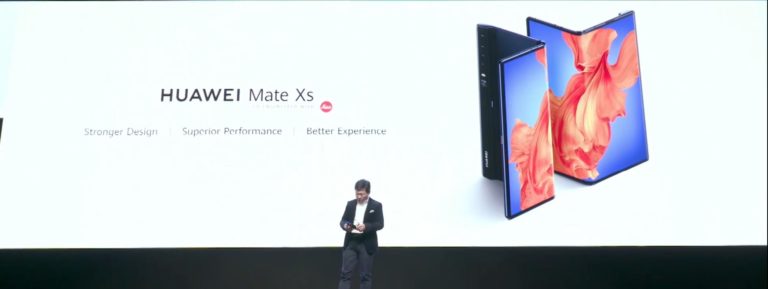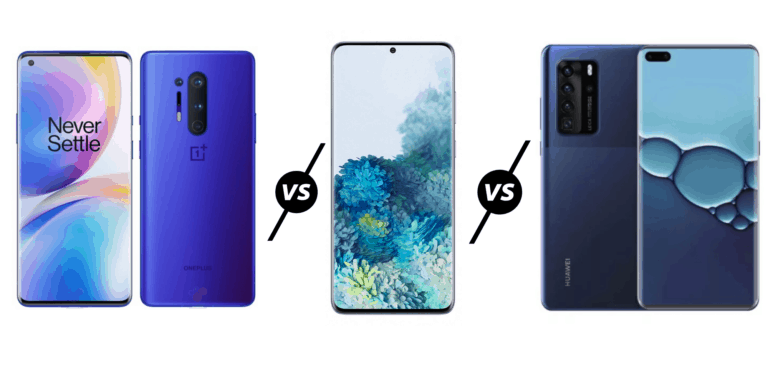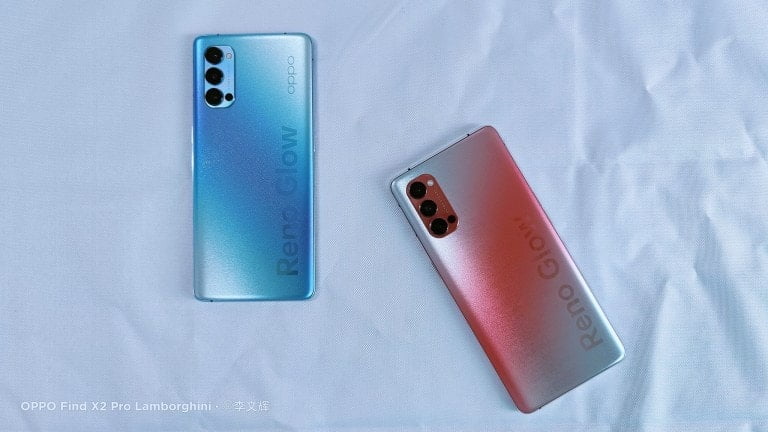Any links to online stores should be assumed to be affiliates. The company or PR agency provides all or most review samples. They have no control over my content, and I provide my honest opinion.
3DMark Wildfire Stress Testing & Thermal Throttling
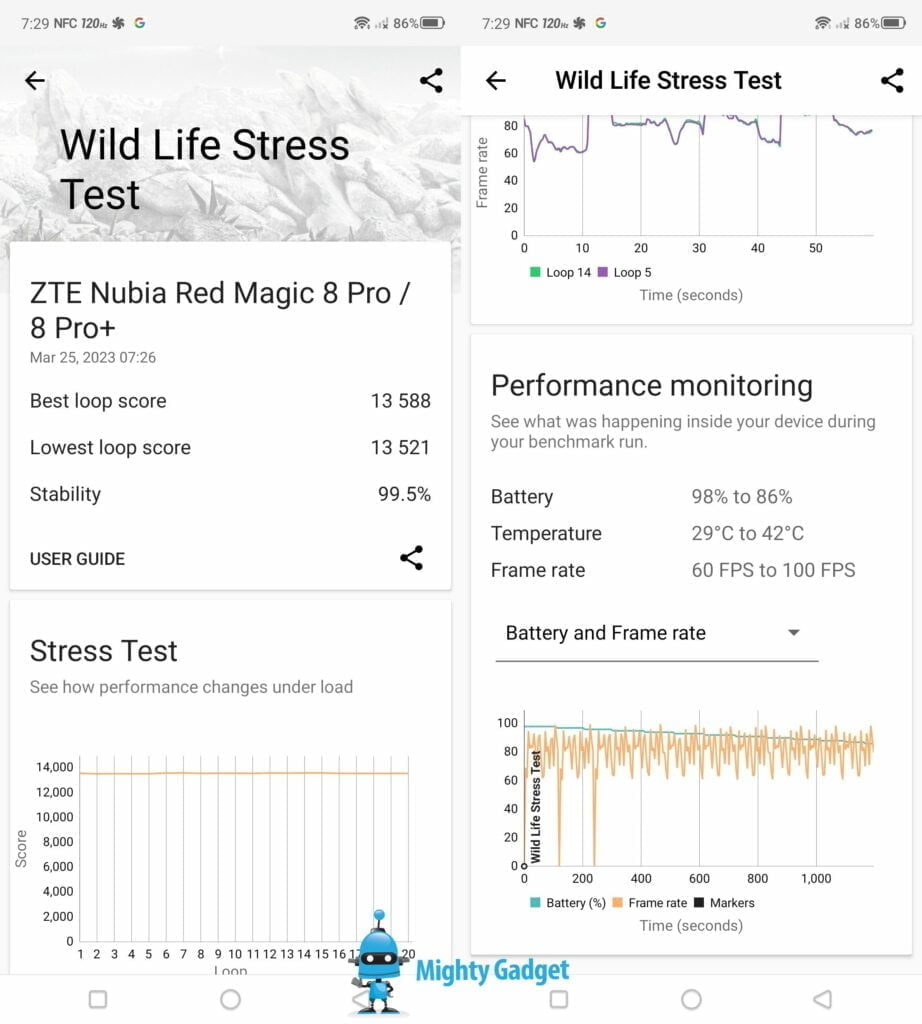
| Best | Lowest | Stability | Temp Change °C | Max Temp °C | Battery % | |
|---|---|---|---|---|---|---|
| Qualcomm Snapdragon 8 Gen 2 REDMAGIC 8 Pro | 13588 | 13521 | 99.5% | 13°C | 42°C | 98% to 86% |
| Qualcomm Snapdragon 8+ Gen 1 REDMAGIC 7S Pro | 10709 | 10275 | 95.9% | 22°C | 49°C | 98% to 80% |
| Qualcomm Snapdragon 8 Gen 1 REDMAGIC 7 Pro | 10071 | 9796 | 97.3% | 18°C | 48°C | 87% to 56% |
| Qualcomm Snapdragon 888+ | 5856 | 5806 | 99.1% | 21°C | 51°C | 77% to 61% |
| Qualcomm Snapdragon 888 | 5872 | 5557 | 94.6% | 36°C | 59°C | 100% to 82% |
| Qualcomm Snapdragon 888 (Realme GT) | 5850 | 3234 | 55.3% | 20°C | 47°C | 75% to 62% |
For the 3DMark Wildfire Stress Test, we see a significant improvement across the board. There is a massive 26.9% improvement with the best score, and the phone doesn’t throttle the performance later on in the test. Therefore, the lowest score is 31.6% from the previous generation.
It would seem that the chipset is significantly more efficient and aided by active cooling. I did multiple tests, the first test had the temperature start at 21°C and peak at 39°C. That’s 10°C cooler than the maximum temperature of the Redmagic 7S Pro. In the second test, the phone started at 29°C and peaked at 42°C. Again, this is well below the previous generations and a much smaller temperature change.
The battery drops just 12% points, which is also much lower than the previous generation, but you will also want to factor in the fact that it has a bigger battery. A quick bit of maths would indicate that the Redmagic 7S Pro used 900mAh while the Redmagic 8 Pro used 720mAh. The older Redmagic 7 Pro used more than double at roughly 1550mAh.
Geekbench
| Single Core | Multicore | |
|---|---|---|
| Qualcomm Snapdragon 8 Gen 2 Redmagic 8 Pro | 1485 | 5159 |
| Qualcomm Snapdragon 8+ Gen 1 | 1324 | 4193 |
| Qualcomm Snapdragon 8 Gen 1 | 1238 | 3724 |
| Qualcomm Snapdragon 888+ | 1190 | 3698 |
| Qualcomm Snapdragon 888 | 1119 | 3333 |
| Qualcomm Snapdragon 888 (Realme GT) | 1136 | 3434 |
Geekbench has been upgraded to V6, and the results are not the same between versions. You can still get Geekbench 5 on the Playstore, and the above results are from that.
This is a good example of how different benchmarks vary and you should take everything with a pint of salt. The CPU performance in this benchmark is significantly better than what was implied with the Antutu benchmark. There has been a 12.2% uplift in the single core score and an impressive 23% improvement with the multi core.
In Geekbench 6, the Redmagic 8 Pro achieves:
- Single Core: 1980
- Multi Core: 5627
PCMark 3.0 & PCMark 3.0 Battery
In PCMark 3.0 the phone achieves a score of 12652 in the Work 3.0 benchmark. This is lower than the score I achieved with PCMark 2.0 on the previous phones. This could be a change in the benchmark, but it is equally likely that Redmagic has tuned the phone better to manage its performance. You don’t need the phone going full throttle for day-to-day tasks.
Unfortunately, I have not been able to do a successful run of the PCMark 3.0 battery test, yet. It froze at 50% when I did my first run.
Overall
As you’d expect, the Qualcomm Snapdragon 8 Gen 2 provides a significant performance boost compared to last years flagship chipset.
For me, the most important thing is that Qualcomm is using TSMC for the fabrication process, and the new Qualcomm Snapdragon 8 Gen 2 is not just incredibly powerful but much more efficient than it would have been if they had used Samsung.
Qualcomm is in a strong position this year. Samsung has bowed out of the flagship chipset market for now. MediaTek is biting at their heels; the MediaTek Dimensity 9200 should have comparable performance to the Snapdragon 8 Gen 2, but MediaTek was very vague about the Dimensity 9200 being used on any flagship phones in western markets this year.
I am James, a UK-based tech enthusiast and the Editor and Owner of Mighty Gadget, which I’ve proudly run since 2007. Passionate about all things technology, my expertise spans from computers and networking to mobile, wearables, and smart home devices.
As a fitness fanatic who loves running and cycling, I also have a keen interest in fitness-related technology, and I take every opportunity to cover this niche on my blog. My diverse interests allow me to bring a unique perspective to tech blogging, merging lifestyle, fitness, and the latest tech trends.
In my academic pursuits, I earned a BSc in Information Systems Design from UCLAN, before advancing my learning with a Master’s Degree in Computing. This advanced study also included Cisco CCNA accreditation, further demonstrating my commitment to understanding and staying ahead of the technology curve.
I’m proud to share that Vuelio has consistently ranked Mighty Gadget as one of the top technology blogs in the UK. With my dedication to technology and drive to share my insights, I aim to continue providing my readers with engaging and informative content.

